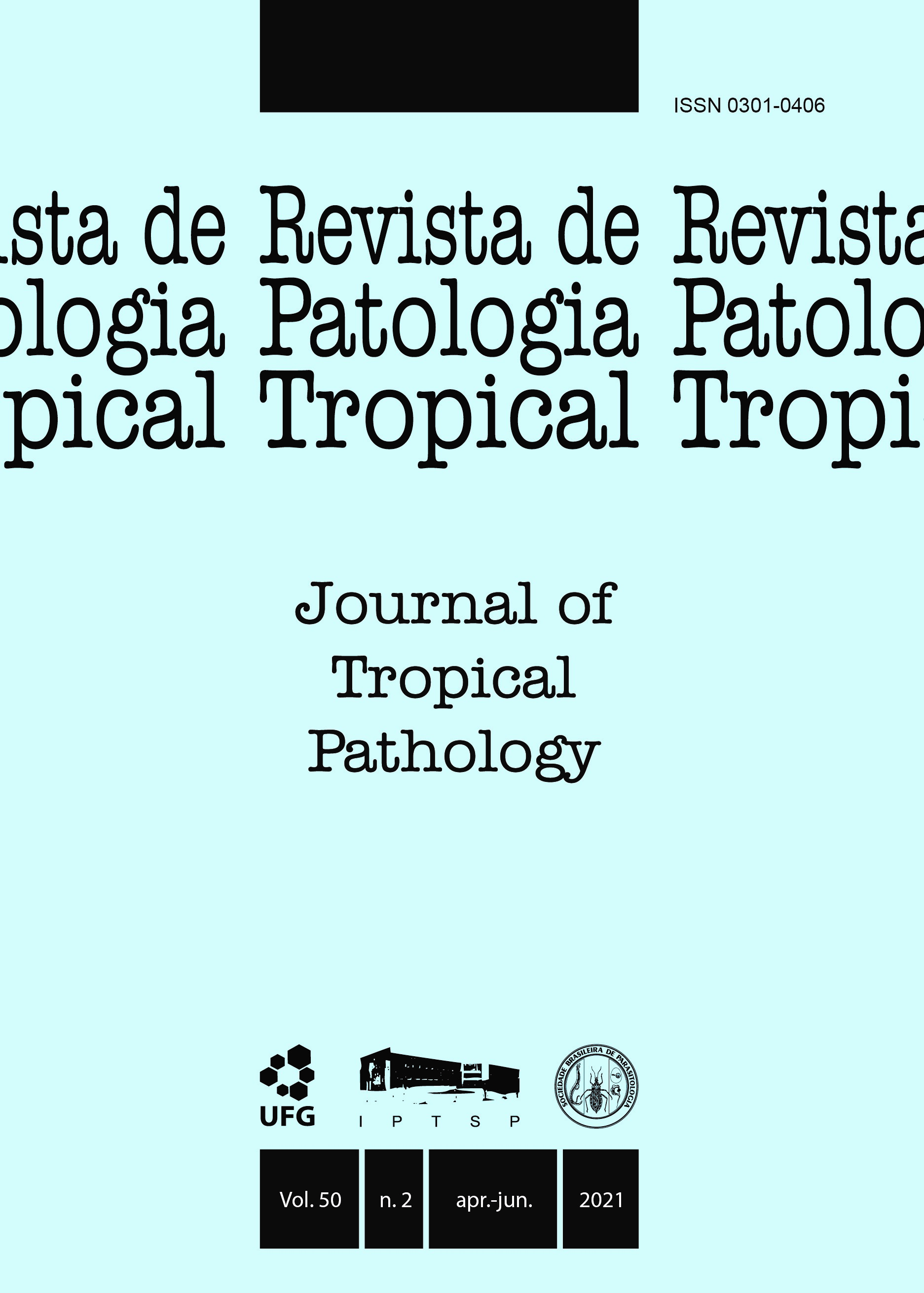Epidemiological evaluation of patients submitted to the galactomannan test with suspected invasive aspergillosis
DOI:
https://doi.org/10.5216/rpt.v50i2.69589Resumo
Invasive aspergillosis (IA) increases dramatically when there is potential risk in many patient groups, in particular with hematological malignancies. The purpose of the study was to trace the epidemiological profile of patients who underwent galactomannan test by ELISA with suspected IA and to determine the factors that contribute to the development of the disease. We evaluated 264 patients who underwent galactomannan test with suspected IA from 2013 to 2015.The clinical-epidemiological characteristics were determined using descriptive statistics. The variables were evaluated using the chi-square test (χ2) and the G-test, with p-value considered significant below 0.05. According to the classification for IA by the European Organization for Research and Treatment of Cancer, the disease was considered proven in 7.3%, defined by positive culture for the fungus, 6.4% as probable through detection of galactomannan and the presence of pulmonary infiltrates and 5.1% as possible by radiological alterations suggestive of IA and negative galactomannan test. The mortality rate was 31.6% of all patients and 61.3% for proven / probable / possible IA indicating that the disease was significantly associated with the risk of death. According to these result indications and considering the high mortality rate caused by the development of IA, as well as the fact that early therapy promotes significant improvement in the patients’ prognosis, we conclude that the detection of galactomannan may be considered an effective method to aid the identification of IA.
KEY WORDS: Invasive pulmonary aspergillosis; neutropenia; enzyme-liked immunosorbent assay; ELISA test searching for Aspergillus; galactomannan.
Downloads
Downloads
Publicado
Como Citar
Edição
Seção
Licença
The manuscript submission must be accompanied by a letter signed by all authors stating their full name and email address, confirming that the manuscript or part of it has not been published or is under consideration for publication elsewhere, and agreeing to transfer copyright in all media and formats for Journal of Tropical Pathology.

